Table of Contents
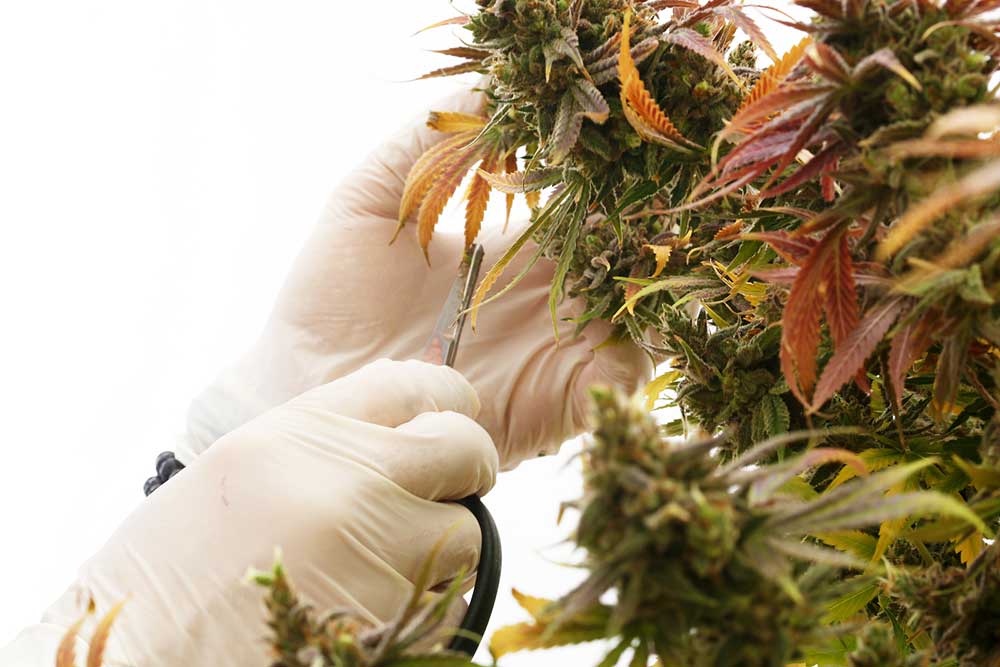
If you want to prune a marijuana plant or trim it as you discovered that defoliation can increase yields, this is the defoliation guide to use. You do need to know the right way to do it as there is a possibility of having a cannabis plant that will experience lower yields because defoliation was done the wrong way.
When you study instructionals on how to grow a marijuana plant, you will often get advice about defoliating it, and there might be that veil of mystery on how to do this gardening technique. It isn’t a mystery and you can get to harvest the maximum amount possible from your cultivated cannabis plant when you defoliate the right way.
Removing leaves even if these don’t contain THC might cause you hesitation, especially if you are not an experienced gardener. It is the buds that will be loaded with resin that must remain untouched. Aside from the buds, all the other marijuana plant parts including the leaves, cannot get you high. Yet, if you notice that the weed strain that you are cultivating has a profusion of leaves, it is time to give it a good prune.
This is the premature removal of a grass part like leaves by cutting. Marijuana is grass but it is not defoliated to be mown like the lawn grass at a golf course. Marijuana is grass but it is not the kind to be defoliated by animals like goats kut to chew. Any kind of grass can be defoliated yet when it comes to cannabis, it means that the leaves are to be removed, pruned, or trimmed.
It can be said that pruning a cannabis plant is the same as defoliating it but technically speaking, it is not the same. Pruning plants included cutting branches and you do not cut marijuana plant branches. It is only the sub-shots and some leaves that are “pruned”. But, let us not get too technical as it is highly acceptable to use the words prune and trim when one is defoliating a cannabis plant.
The impact of doing this technique can be either positive or negative. Properly done, the results will aid in making the plant prosper and has many benefits. The factors that affect the proper management of this technique include how many leaves are removed, how often defoliation is done, and the time intervals.
The cannabis defoliation is a gardening technique that is just like fertilizing and watering a plant – it can be done right or wrong way. There is overwatering and those that make the plant struggle to survive because of drought-like conditions. Defoliation takes a bit of skill and it is not to be done to make the plant lose more leaves that it should.
The marijuana plant when defoliated should retain its ability to continue to grow. The plant material to be removed, which are some of the leaves, should be just the right about for the plant to continue to function. If there is a massive amount of leaves removed, the photosynthesis function of the plant and other related functions goes on a decline. Keep in mind that leaves are needed for photosynthesis.
To remove leaves from some marijuana plants isn’t necessary. There are autoflowering cannabis plants that do not need light for the buds to flower. There are marijuana plants that do not have a lot of leaves. There are the ones that like sativa types that grow in the great outdoors that get the full benefit of the sun as it is exposed to it from sunrise to sunset.
Any marijuana plant in any kind of growing medium – be it soil or hydroponically grown – can be defoliated. You will need a pair of gardening scissors. You can also use ordinary scissors, just make sure that it is is the right size as small scissors might make the leaf removal more tasking. Also, make sure that the scissors are sharp enough to make a clean and precise cut.
If there is a yellow leaf or those that do not look healthy, such as broken ones, it is time to remove it. This will not just reduce the leaf density but will get rid of a leaf that will take in nutrients and energy, making the plant spend its energy on an unnecessary leaf. There are people who pull the leaves off with their hands. This can be done to sickly yellow leaves and dried ones easily but for healthy leaves, it is better to cut so that branch won’t be moved when a leaf is pulled.
There are some who do massive defoliation leaving the marijuana plant nearly bare. There are those who remove a few fan leaves. Take note that once a leaf is removed, it will not grow back. Removal of 20 to 90 percent of the total leaves can be done yet take it easy and choose to get rid of less instead of more. You can start defoliating by trimming off those big fan leaves.
Defoliating ideally should be done only 3 times, max during the different stages. You can’t go snipping away when you feel like it. It is a plant that needs nurturing care – at the right time. Yet, there are some marijuana growers who are experts at defoliating and do so on a continuous basis by removing leaves every seven to ten days and when they regrow.
When the marijuana plant is about 25 centimeters in height, the biggest leaves can be removed. By doing this the plant has enough leaves to continue with the necessary photosynthesis and nutrient processing for growth. There are some who prefer to defoliate when the plant is at the blooming stage as young plants can suffer from the stress of leaf removal but since defoliating is a training technique, the plant will be trained for future defoliation. Getting rid of the bigger leaves during the vegetative stage also greatly aids in pest-control and preventing mildew.
Defoliation may slow down the growth of the roots so the plant requires to have the correct nutrient intake. It is not risky if only a few big leaves are removed yet if the nutrient available from the growing medium is low, the plant will experience some difficulty in recovering. Yet, have no fear as many weed strains are vigorous growers and it will recover fast and regain its dense foliage.
The marijuana plant will be defoliated twice during the flowering stage. During the first week, when a lot of the pistils have appeared, it is time to get those scissors ready. All the big leaves should be removed, leaving only the smaller ones. You will be amazed to see how the leaves will regrow after three days and how dense the foliage will be after a week or so.
During the third week of flowering, as the plants have recovered from the last leaf removal technique, repeat the process of removing the larger leaves. The results that you wish to obtain by removing the larger leaves it to ensure the light reaches the lower part of the plant. Ideally. When you defoliate, there will be no shadows cast by the higher leaves on the lower plant parts. Make sure not to cut leaves that are very near those precious buds unless leaf density is very high.
During the flowering stage, you will notice how those wonderful, resin loaded buds swell and grow. Especially after the last defoliation, these buds will become much bigger, fast. As the buds grow bigger, the yield increases.
Imagine your chosen marijuana plant getting bigger buds. If the weed strain has big buds already, it will become bigger. If the plant is low-yielding, this will have a better harvest. Remember the computation? If you gain a few grams per bud, then you will have an overall better harvest without having to cultivate another marijuana plant. This is especially needed when there is a limit to the number of marijuana plants that can be grown. And, even if you just have one plant or a whole marijuana farm, defoliating is the technique to use to have a better crop.
There are benefits from doing this technique to cannabis plants aside from increasing the harvest amount. The yields would be better yet there are other plus factors that make this gardening technique something that you should do. The advantages include:
If the buds harvest increases by 25 percent, that means a lot. A typical harvest might be an ounce per indica plant so that would bring it up to 1.25 ounces. If you have 4 cultivars, then instead of harvesting four ounces, you will get 5 ounces. It’s like having one additional marijuana plant.
Nowadays, having good marijuana crop production includes the appearance, shape, and size of the buds. Buds can look similar in appearance. There are times that the harvest would have different sized buds due to the fact that the smaller ones lacked light exposure as the leaves covered the light source.
Though plants have their natural height and shape, by applying the defoliation technique, you can make the changes required to get the desired height and shape. Typically, an even canopy is sought for when doing this technique and that can be achieved when one has this gardening skill.
Hidden among the leaves might be insects that can be harmful to the marijuana plant. Getting rid of some of the leaves aids in having less hiding spaces for insects such as mites. It would also make it easier to get rid of those insects with the use of your hands or other organic methods. It also reduces the ill effects of humidity and enhances air circulation.
The top leaves will prevent the light from reaching the buds located at the lower branches. When a cannabis plant is grown outdoors, the light exposure can also be limited by the leaves, even if the light source which is the sun, moves. When cannabis is grown indoors, the light source doesn’t move, so this technique is vital, especially if the weed strain requires the changing of light cycles to flower.
Changing of lights is required for photoperiod weed stains. Even if the cannabis plant is autoflowering, it still needs light. If the plant is defoliated, it can reduce the number of bulbs required to light up a growing area.
When the plant does not have to nourish more leaves, it will harness their energy to bringing the nutrients to the other plant parts, such as the buds. And, since the light source is better for the lower part of the plant, plus the other benefits such as having fewer problems with air circulation, the defoliation technique will result in a stronger and healthier marijuana plant.
Defoliation isn’t for all grow rooms and weed strains. Doing this gardening technique the wrong way will endanger the marijuana plant, might make it die, or decrease the yield. A plant has to thrive, not just survive, for a great harvest to be obtained. A sickly plant will not benefit from being defoliated because it will only cause it stress when the leaves are removed. It will not aid in making a plant feel cooler when the weather conditions are too hot or because it has a nutrient deficiency. Defoliate plants that are in good condition to make these be in top condition.
Defoliation can be done to both indoors and outdoor cannabis plants. There are times that defoliation will not show a significant increase in the yield of outdoor plants. Defoliation is proven to work to generously increase the yield of weed that is grown indoors. For cannabis growers who want to maximize indoor crop production, defoliating is essential.
This is a growth technique that is done by removing leaves from a plant to vary the vegetative process. It is an old farming technique does to crop plants such as tomatoes and cotton. It is also done for specialty plant growing such bonsai plants. For weed, defoliation has to be done during certain growth stages to get a crop that has is of better quality and quantity. Take note that this is an aggressive technique.
Make the most of out this gardening technique of how to increase yields by removing leaves for your marijuana plants to be healthier, stronger, and to have a more bountiful and beautiful harvest.
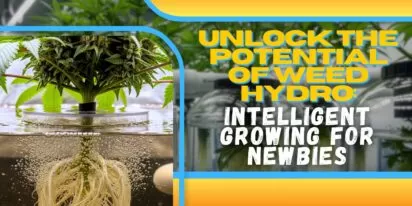
Curious about growing weed in a healthy, effective way? Welcome to the realm of weed hydro! This method uses water instead of soil, delivering n
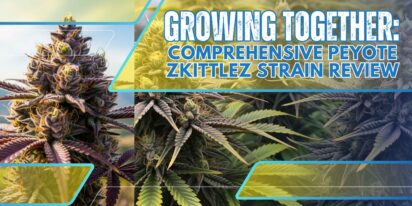
Peyote Zkittlez is a unique cannabis strain that has quickly gained dedicated followers among enthusiasts and patients alike. Its parentage—Zk
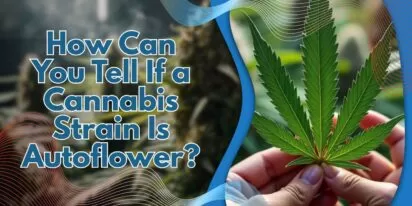
As growers, we want strains that work well, are strong, and are of good quality. Autoflowering cannabis strains are a big step forward for both
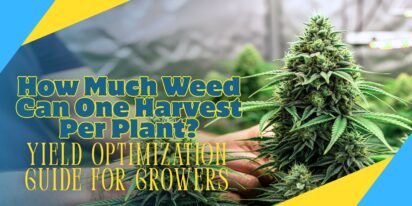
Pot growers always ask the same basic question: How much weed does a weed plant produce? The answer is complex and depends on a multitude of var

Ever had the room spin after a few hits? You're not alone. Figuring out how to prevent getting dizzy high can make your cannabis experience a wh
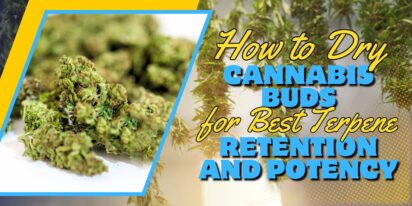
Drying cannabis properly is a critical process in preserving the plant's full aroma and flavor and its psychoactive abilities. Tampering with th

Ever caught yourself a bit too high and all of a sudden in need of being normal? Whether you're heading out for munchies or bumping into someone

Looking for sage advice on how not to get pinched with weed without batting an eye? Attempting to protect your stash from gossipy roommates, sno
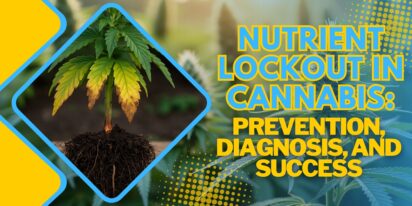
Nutrient lockout, also known as nutrient binding or chemical antagonism, is a significant issue in cannabis cultivation that negatively impacts
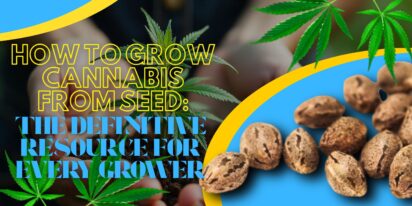
Germination is the most critical initial stage in growing healthy, high-quality cannabis plants. During germination, the dormant seed becomes a
Are You 18 Or Over?
By selecting “Continue”, you confirm that you are at least 18 years of age and legally permitted to access cannabis related content in your region.
By using Rocketseeds.com, you agree to our legal disclaimer.
Excellent blog here Also your website loads up very fast What web host are you using Can I get your affiliate link to your host I wish my web site loaded up as quickly as yours lol
Your writing is not only informative but also incredibly inspiring. You have a knack for sparking curiosity and encouraging critical thinking. Thank you for being such a positive influence!
Simply wish to say your article is as amazing The clearness in your post is just nice and i could assume youre an expert on this subject Well with your permission let me to grab your feed to keep updated with forthcoming post Thanks a million and please carry on the gratifying work
Somebody essentially lend a hand to make significantly articles Id state That is the very first time I frequented your website page and up to now I surprised with the research you made to make this actual submit amazing Wonderful task
Your blog is a beacon of light in the often murky waters of online content. Your thoughtful analysis and insightful commentary never fail to leave a lasting impression. Keep up the amazing work!
Thank you for the auspicious writeup It in fact was a amusement account it Look advanced to more added agreeable from you By the way how could we communicate
Your blog is a constant source of inspiration for me. Your passion for your subject matter shines through in every post, and it’s clear that you genuinely care about making a positive impact on your readers.
Your blog is a constant source of inspiration for me. Your passion for your subject matter is palpable, and it’s clear that you pour your heart and soul into every post. Keep up the incredible work!
Your articles never fail to captivate me. Each one is a testament to your expertise and dedication to your craft. Thank you for sharing your wisdom with the world.
Your blog is a testament to your dedication to your craft. Your commitment to excellence is evident in every aspect of your writing. Thank you for being such a positive influence in the online community.
Your writing has a way of resonating with me on a deep level. I appreciate the honesty and authenticity you bring to every post. Thank you for sharing your journey with us.
Your blog is a true gem in the world of online content. I’m continually impressed by the depth of your research and the clarity of your writing. Thank you for sharing your wisdom with us.
Hi i think that i saw you visited my web site thus i came to Return the favore Im attempting to find things to enhance my siteI suppose its ok to use a few of your ideas
Somebody essentially help to make significantly articles Id state This is the first time I frequented your web page and up to now I surprised with the research you made to make this actual post incredible Fantastic job
Usually I do not read article on blogs however I would like to say that this writeup very compelled me to take a look at and do so Your writing taste has been amazed me Thanks quite nice post
Your blog has quickly become one of my favorites. Your writing is both insightful and thought-provoking, and I always come away from your posts feeling inspired. Keep up the phenomenal work!
Every time I visit your website, I’m greeted with thought-provoking content and impeccable writing. You truly have a gift for articulating complex ideas in a clear and engaging manner.
Hey there You have done a fantastic job I will certainly digg it and personally recommend to my friends Im confident theyll be benefited from this site
I have read some excellent stuff here Definitely value bookmarking for revisiting I wonder how much effort you put to make the sort of excellent informative website
Nice blog here Also your site loads up very fast What host are you using Can I get your affiliate link to your host I wish my site loaded up as quickly as yours lol
What i do not understood is in truth how you are not actually a lot more smartlyliked than you may be now You are very intelligent You realize therefore significantly in the case of this topic produced me individually imagine it from numerous numerous angles Its like men and women dont seem to be fascinated until it is one thing to do with Woman gaga Your own stuffs nice All the time care for it up
Your blog is a beacon of light in the often murky waters of online content. Your thoughtful analysis and insightful commentary never fail to leave a lasting impression. Keep up the amazing work!
Your blog is a breath of fresh air in the often stagnant world of online content. Your thoughtful analysis and insightful commentary never fail to leave a lasting impression. Thank you for sharing your wisdom with us.
Your blog is a beacon of light in the often murky waters of online content. Your thoughtful analysis and insightful commentary never fail to leave a lasting impression. Keep up the amazing work!
Usually I do not read article on blogs however I would like to say that this writeup very compelled me to take a look at and do it Your writing style has been amazed me Thank you very nice article
Your writing has a way of resonating with me on a deep level. I appreciate the honesty and authenticity you bring to every post. Thank you for sharing your journey with us.
This hydroponics guide is quite the buzz, seriously! Who knew growing weed without dirt could be so complicated yet potentially rewarding? The breakdown of systems like DWC and NFT is helpful, though I suspect my cat might confuse the air pump for a toy. The idea of cleaner buds is tempting, especially since explaining hydro weed to my non-growing friends might get messy. And the bit about potential dizziness from hydro weed? Perfect, now I have an excuse for why I always stumble a bit after a grow session. Still, the promise of faster grows and higher yields is hard to ignore, even if it means more trips to the pH meter than to the coffee shop. Overall, a cultivating read for the curious grower!